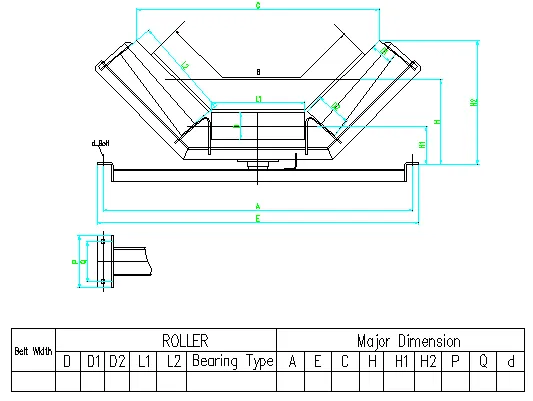 Afrikaans
Afrikaans  Albanian
Albanian  Amharic
Amharic  Arabic
Arabic  Armenian
Armenian  Azerbaijani
Azerbaijani  Basque
Basque  Belarusian
Belarusian  Bengali
Bengali  Bosnian
Bosnian  Bulgarian
Bulgarian  Catalan
Catalan  Cebuano
Cebuano  Corsican
Corsican  Croatian
Croatian  Czech
Czech  Danish
Danish  Dutch
Dutch  English
English  Esperanto
Esperanto  Estonian
Estonian  Finnish
Finnish  French
French  Frisian
Frisian  Galician
Galician  Georgian
Georgian  German
German  Greek
Greek  Gujarati
Gujarati  Haitian Creole
Haitian Creole  hausa
hausa  hawaiian
hawaiian  Hebrew
Hebrew  Hindi
Hindi  Miao
Miao  Hungarian
Hungarian  Icelandic
Icelandic  igbo
igbo  Indonesian
Indonesian  irish
irish  Italian
Italian  Japanese
Japanese  Javanese
Javanese  Kannada
Kannada  kazakh
kazakh  Khmer
Khmer  Rwandese
Rwandese  Korean
Korean  Kurdish
Kurdish  Kyrgyz
Kyrgyz  Lao
Lao  Latin
Latin  Latvian
Latvian  Lithuanian
Lithuanian  Luxembourgish
Luxembourgish  Macedonian
Macedonian  Malgashi
Malgashi  Malay
Malay  Malayalam
Malayalam  Maltese
Maltese  Maori
Maori  Marathi
Marathi  Mongolian
Mongolian  Myanmar
Myanmar  Nepali
Nepali  Norwegian
Norwegian  Norwegian
Norwegian  Occitan
Occitan  Pashto
Pashto  Persian
Persian  Polish
Polish  Portuguese
Portuguese  Punjabi
Punjabi  Romanian
Romanian  Russian
Russian  Samoan
Samoan  Scottish Gaelic
Scottish Gaelic  Serbian
Serbian  Sesotho
Sesotho  Shona
Shona  Sindhi
Sindhi  Sinhala
Sinhala  Slovak
Slovak  Slovenian
Slovenian  Somali
Somali  Spanish
Spanish  Sundanese
Sundanese  Swahili
Swahili  Swedish
Swedish  Tagalog
Tagalog  Tajik
Tajik  Tamil
Tamil  Tatar
Tatar  Telugu
Telugu  Thai
Thai  Turkish
Turkish  Turkmen
Turkmen  Ukrainian
Ukrainian  Urdu
Urdu  Uighur
Uighur  Uzbek
Uzbek  Vietnamese
Vietnamese  Welsh
Welsh  Bantu
Bantu  Yiddish
Yiddish  Yoruba
Yoruba  Zulu
Zulu Analysis and Optimization of Conveyor Bearing Housing for Improved Industrial Efficiency and Durability
Understanding Conveyor Bearing Housing Essential Components for Efficient Operations
Conveyor systems are an integral part of many industries, facilitating the efficient movement of materials from one point to another. Within these systems, bearing housings play a critical role in ensuring the smooth functioning and reliability of conveyor operations. The conveyor bearing housing, in particular, is a vital component that houses the bearings, providing support and protection, ultimately contributing to the longevity of the conveyor system.
What is Conveyor Bearing Housing?
A conveyor bearing housing is a protective enclosure that holds the bearings in place within a conveyor system. Bearings are crucial for reducing friction between moving parts, allowing for smooth rotation of shafts and rollers. The housing is designed to securely fit the bearings and align them accurately within the system. Typically made from materials such as cast iron, steel, or synthetic composites, the housing is engineered to withstand various operational stresses, including vibration, impact, and temperature fluctuations.
Importance of Bearing Housing in Conveyor Systems
1. Support and Alignment One of the primary roles of bearing housings is to provide support for the bearings. Proper alignment of the bearing within its housing reduces wear and tear on both the bearing and the shaft it supports. Misalignment can lead to premature bearing failure, increased maintenance costs, and unplanned downtime. Therefore, investing in high-quality bearing housings that ensure correct alignment is essential.
conveyor bearing housing

2. Protection from Contaminants The working environment of conveyors can be harsh, often exposing components to dust, debris, moisture, and other contaminants. Conveyor bearing housings are designed to protect bearings from these elements, preventing damage and ensuring consistent performance. Many housings are equipped with seals and covers to further enhance this protective capability.
3. Heat Dissipation During operation, bearings can generate heat due to friction. A well-designed bearing housing can help dissipate this heat, maintaining an optimal operating temperature for the bearings. Overheating can lead to lubricant breakdown and eventual bearing failure, so effective heat management is critical to the longevity of the conveyor system.
4. Flexible Design Options Conveyor bearing housings come in various designs to accommodate different types of conveyors and operational requirements. For example, some housings are fitted with adjustable features that allow for easy tensioning of belts or chains, while others might include integrated lubrication systems for ease of maintenance. This flexibility allows industries to tailor their systems to specific needs, which can enhance overall productivity.
5. Cost-effective Maintenance Utilizing durable and reliable conveyor bearing housings can significantly reduce maintenance efforts and costs. By ensuring the longevity of bearings and protecting them from damage, companies can avoid frequent replacement and repair expenses. Moreover, many modern housings are designed for quick and easy access, simplifying inspection and maintenance processes.
Conclusion
In conclusion, conveyor bearing housing is a fundamental element of conveyor systems, significantly impacting their performance and efficiency. By providing essential support, protection, and heat management for bearings, these components help ensure reliable operation and minimize maintenance costs. As industries continue to optimize their processes, investing in high-quality bearing housings is a crucial step toward enhancing the overall efficiency and longevity of conveyor systems. Understanding the vital role of these components can empower businesses to make informed decisions that benefit their operational workflows and bottom lines.
-
Revolutionizing Conveyor Reliability with Advanced Rubber Lagging PulleysNewsJul.22,2025
-
Powering Precision and Durability with Expert Manufacturers of Conveyor ComponentsNewsJul.22,2025
-
Optimizing Conveyor Systems with Advanced Conveyor AccessoriesNewsJul.22,2025
-
Maximize Conveyor Efficiency with Quality Conveyor Idler PulleysNewsJul.22,2025
-
Future-Proof Your Conveyor System with High-Performance Polyurethane RollerNewsJul.22,2025
-
Driving Efficiency Forward with Quality Idlers and RollersNewsJul.22,2025





























